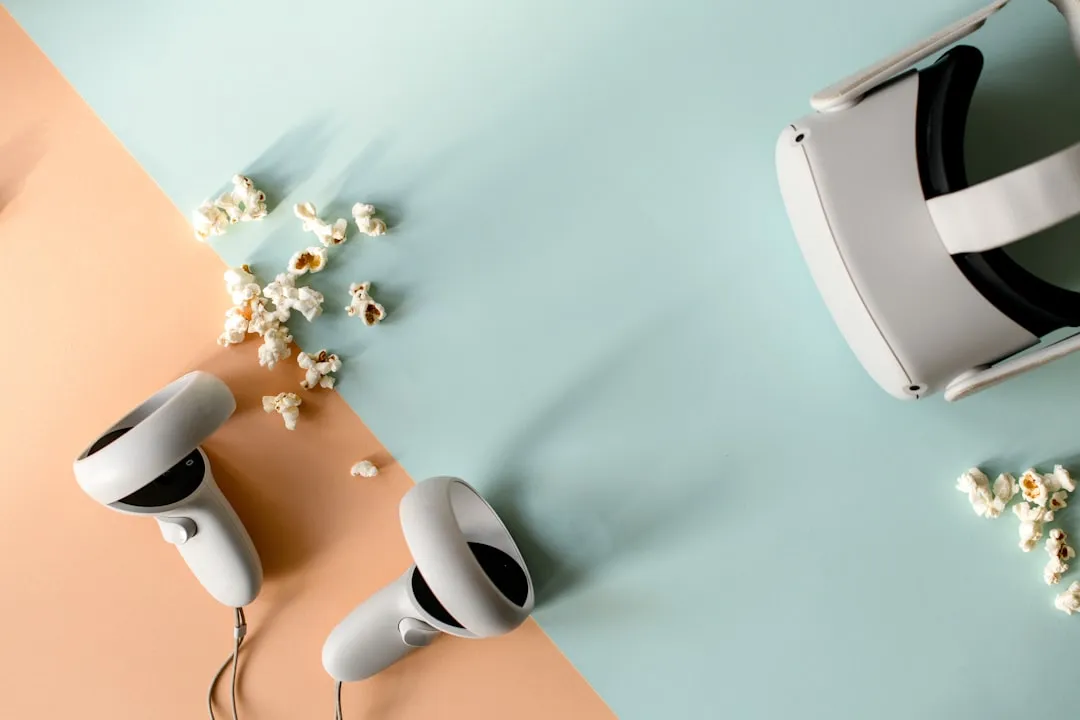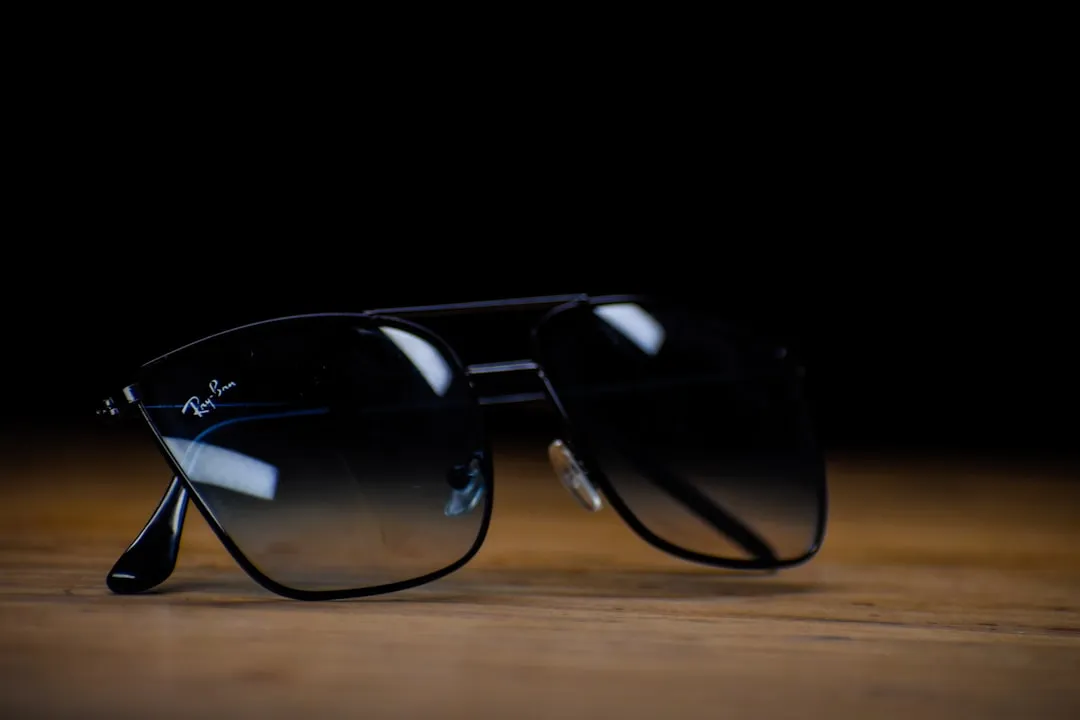The year 2019 was filled with all the normal peaks and valleys of the tech business cycle, but this year was particularly important in a space as relatively young as the augmented reality industry.
What once seemed like a vast fertile bed of mobile AR apps, powered by Apple's ARKit and Google's ARCore turned out to be just a small beachhead in the mobile component of immersive computing.
- Don't Miss: 2019's Up & Coming AR Founders You Need to Know
Meanwhile, the high-end AR players at the top of the mountain swapped places, as one replaced its aging headset with a brand new device that became the state of the art, while the other experienced a surge of new apps, but even more doubts as its funding runway and market strategy has been placed in doubt.
And operating mostly under the radar of all but the most vigilant AR insiders were the mid-tier AR smartglasses makers, making strides toward normalizing AR wearables for both enterprise and general consumer users.
Of course, many industry watchers are still keeping a close eye on Apple, with rumors of its AR smartglasses still freshly stoked by analysts and leakers. And, because of the history of the iPhone and its imitators, there are expectations that any smartglasses product from Apple will be swiftly matched by imitators. But some, particularly in China, are already getting a headstart.
We frequently offer our take on where the space is going, but we thought it would be valuable to pluck some of the top people working behind the scenes in the AR business to see exactly what they think about what happened this year, and what may be in store for 2020.
What Was the Best Thing That Happened in the Augmented Reality Space in 2019?
Mike Campbell, executive vice president of Augmented Reality Products at PTC:
"The best thing that happened is that AR continued to go far beyond the 'Pokémon Go' entertainment app, to enterprise AR being deployed everywhere — from the manufacturing floor, to product development, sales and marketing, service and training, and more.
"Also, advancements in AR devices continued to democratize AR. Digital eyewear is one of the biggest challenges to overcome for adoption of AR in the industrial enterprise, and 2019 had some great news. Beyond being the way people will consume AR content, digital eyewear will become a way to instrument what people actually do – think of it as IoT for people, turning bits and bytes into and sounds and sights, and vice versa. Whereas machines have become more effective components of the enterprise via their connections to remote information sources and each other, the human side of this equation hasn't benefited the same way.

Mike Campbell, executive vice president of Augmented Reality Products at PTC
"AR is the answer to how we connect people to the Internet. People don't have an Ethernet port, but now they have AR devices that serve the same task of converting digital to analog and back again. People can now basically use a device that supercharges their senses. With digital data streaming down from the cloud converted to analog signals, you can see and hear with your senses, and meanwhile when you speak with your voice or move your hands around, the analog signals you're creating get converted back to digital data and sent up to the cloud."
Edward Saatchi, Emmy Award-winning co-founder & executive producer at immersive studio Fable and founder of the Oculus Story Studio:
"Increase in partnerships [and] increased collaboration between big companies, start-ups, and developers has been driving the creativity and innovation we're seeing in the space. With more developer kits and a growing community in the space, it is this interdisciplinary approach to creation that drives change."
Scott Montgomerie, CEO of remote assistance software brand Scope AR:
"The best thing that happened in the AR space this year is by far: the availability of Microsoft's HoloLens 2. It signals a tipping point for AR and wearables in 2020 as Microsoft is clearly taking aim at the enterprise market. As a result, more Fortune 100 businesses, and even the U.S. military, will be able to use the device to start exploring what AR is truly capable of in the enterprise."
Adam Kaplan, CEO of augmented reality platform development company Edgybees:
"The best thing that happened in the AR space in the past year is the industry-wide recognition of AR's real use cases in the commercial and industrial spaces. To address this huge market potential, we saw large firms join forces with specialized AR startups to apply their technology — which was previously relegated to gaming and entertainment — to use cases that have real, tangible benefits that move society forward.
"Tech like Healium AR, an app that helps veterans manage their anxiety or the HP/Educause Campus of the Future project that investigates uses for AR and VR tech in higher education are examples of what happens when AR's capabilities are focused on progressing humanity."
Lyron Bentovim, CEO of AR/VR platform & services company Glimpse Group:
"The best thing that happened in Augmented Reality in 2019 in my mind was the ARKit 3 update by Apple. On top of showing continued commitment from Apple to Augmented Reality, ARKit 3 offered a great leap forward in the AR capabilities of the iPhone leading to significantly more stable and powerful AR experiences. Having been involved in the AR industry since before ARKit was launched, it is amazing to see how far we have come in the last 3 years."
David Hayes, CEO of waveguide manufacturer WaveOptics:
"As someone with a vested interest in the industry, a great thing to see in 2019 was a large number of consumer electronics companies announcing their intention to launch products in the AR space. This is incredibly exciting when we think about how the industry has grown and where the technology and market perception was just a few years ago. Having the tech giants of the world announcing their plans shows that AR wearables are about to become a reality."
Stephen Lake, CEO of North, maker of Focals:
"2019 saw the introduction of the first true everyday consumer smartglasses, and strong signals that the large tech companies are ramping up investments in their AR strategies -- including rumors on Apple and Facebook's approaches, alongside eyewear products announced by Snap and Amazon."
What Was the Worst Thing That Happened in the Augmented Reality Space in 2019?
Campbell: "While we're making great strides in augmented reality, one of the issues that the industry confronts is a true and comprehensive understanding of the power of the technology and an appreciation of the use cases that it can address and the impact it can make on top and bottom lines. Our job, therefore, is to educate.
"When manufacturing executives see AR technology in action, they're blown away and are interested in learning more. Seeing is believing — and once seeing the potential of this, these executives want to explore more. So we're on an upward swing of proving out the value and seeing more enterprise-level implementations. As an example and within the context of the manufacturing skills gap, AR can have significant impacts on business goals, including reduced training time, improved productivity and, in turn, greater revenue."
Saatchi: "I definitely see much more room for partnerships extending to artificial intelligence. Currently, AI is used for enterprise, military, healthcare, but it has yet [to reach] the mainstream for everyone to enjoy. We really see the need to bring together not just machine learning engineers but immersive storytellers, designers, [and] artists to create augmented reality experiences with virtual beings that you deeply care about. A lot of AI communities are siloed. What happens if various disciplines brainstorm, share ideas, and collaborate?"
Montgomerie: "It was a disappointing year for consumer AR. Apple and Google put a lot of hype behind it, the Harry Potter game launched with much fanfare, but didn't perform well, and the app stores were relatively empty, lacking any truly compelling experiences that consumers will want to engage with time and again."
Kaplan: "Something that was, and still is, quite detrimental to the AR space was the backlash following Microsoft's DoD deal and the broader inherent misunderstanding of AR's benefits in the military and defense space.
"The overwhelmingly negative response to Microsoft's deal with the DoD shed a harsh light on public opinion regarding military technology. When utilized in a military setting, AR offers unprecedented situational awareness, efficiency and precision — things that everyone can agree are valuable when carrying out life-or-death missions. It's a shame that the public chose fear over hope that AR can offer the military an easier way to understand their surroundings and to better communicate, resulting in higher accuracy in more informed decision-making."
Bentovim: "The biggest disappointment for me was the fact that although the field of view of the HoloLens 2 is larger than HoloLens 1, it is not materially better than the Magic Leap One. The biggest challenge today with headset AR is the field of view and I was hopeful that the new HoloLens would make a more significant improvement in that area."
Hayes: "As with any new market and technology, there has been some market consolidation over the last year. While it is always sad to see startups fail, it shows how difficult it is to build true AR products. That said, the continued excitement from large companies in the sector shows that the market is maturing and the companies that will really shape the AR industry are starting to come to the forefront."

Stephen Lake, co-founder & CEO of North
Lake: "We began to see the failure of strategies that focused on starting with 'performance first' AR headsets, helmets, and so on, rather than practical applications, with the failure of several significant startups in that realm."
What AR Industry Development Are You Most Excited About in 2020?
Campbell: "There is so much happening across the industry today. There's actually a groundswell of activity. Consider the devices: Microsoft has announced the launch of its new HoloLens 2. And vendors, large and small, are jumping into the ring. We've seen the introduction of expanded solutions and offerings for use cases such as remote assistance, expert guidance, and many more… There are much better ways to train the 21st century workforce, and the demand for effective workforce training cannot be understated.
"Many industries are facing a growing skills gap, and that's particularly pronounced among industrial enterprises. The manufacturing industry is forecast to soon have 2.4 million vacant positions, which could impact economic US output by $2.5 trillion over the next decade. At the same time, US training annual expenditures in 2018 reached a staggering $88 billion. The average training time spent per employee was approximately 47 hours, and most of these hours (70%) were allocated to 'blended learning' methods including instructor-led classrooms and learning management systems.
"While these methods might be practical for understanding a job's core principles, they don't necessarily translate to the development of real-world hands-on skills required for the job's performance. Without consistent repetition and reinforcement of work-related concepts, workers will forget 50% of information within one hour, 70% within 24 hours, and 90% over a week.
"Augmented reality enables companies to pivot to deliver relevant digital information in-context to front-line workers as part of a digital transformation initiative. The less trainees are excessively [subjected to] to traditional 'just-in-case' training programs and information is instead delivered through 'just-in-time' methods to a worker in-situ, the greater the acquired knowledge is retained and seamlessly acted upon in real-world environments. The approximately 2.7 billion global desk-less workers can benefit now more than ever from information delivery on-demand and in-context to their work environment 'just-in-time' rather than 'just-in-case.'"

Edward Saatchi co-founder & executive producer at Fable
Saatchi: "At [our company] we're working on exciting virtual beings. As we're exploring virtual beings, it's exciting to see how immersive storytelling with AI can create two-way reciprocal relationships across various platforms, including AR."
Montgomerie: "We're seeing increased buy-in for enterprise AR and we anticipate that trajectory to continue in the year ahead. The C-suite is now a part of the conversation in AR deployments as we're seeing repeatable and consistent ROI numbers from various customers with similar use cases. AR can drive real business value and the industry now has the numbers to prove it, to the point where many Fortune 100 companies are taking notice and figuring out the right use cases for their business.
"I'm also looking forward to the improvement of some of the more technical aspects of AR as a driver for vastly improving the overall user experience. Toolkits are getting better, and object tracking is becoming more feasible as a result of improved computer vision algorithms and processor speeds.
"Lastly, while we may have to wait a bit longer for the long-rumored Apple glasses, there's no way that other electronics powerhouses will stand still now that the HoloLens 2 is available. We can expect competitive, next-gen AR/VR iterations from tech giants, as well as smaller, more niche players as they're pushed to innovate or get left behind. As a result, competition and ubiquity will further expand AR potential in enterprise business and beyond."
Kaplan: "The AR industry is still evolving, and it's clear that 2020 will be a year filled with exciting developments. One development that I can't wait to see is the impact of 5G on AR industry-wide. With stronger connections and decreased latency, AR can be integrated into our everyday lives, optimizing its real-time applications and making a huge difference in society — protecting drivers, keeping cities safe, and assisting public safety professionals."
Bentovim: "I am excited about the potential for non-app-based AR to finally come into the mainstream in 2020, I am aware of multiple non-public developments that hopefully emerge publically and become game-changers in 2020 and beyond. The need for apps is currently a major limitation in the adoption of phone-based AR and these developments when they are launched will have the potential to take Augmented reality to the masses."
Hayes: "2020 will be the year that we'll see a tier-one consumer electronics company deliver an AR wearable product to the market that has had the right level of investment, thought process, and integrated technology. This is significant, [because] consumer launches indicate that the hardware is mature enough to be manufactured at prices that enable the mass market and software experiences are rich enough to support these products."
Lake: "From a device perspective, we'll see the first true breakthrough consumer smartglasses that achieve what we've imagined in science fiction for decades — design and form that matches the best traditional glasses. From a software perspective, consumers are craving the first 'killer apps' of smartglasses that provide transformative experiences beyond what watches and phones can deliver.
"We'll see the first hints of these introduced in 2020, with experiences that begin taking advantage of the unique form and perspective of smart glasses. These will be a major step in delivering on the core promise of AR: technology seamlessly blending with our experience of the world around us, improving our human experience."
Cover image via WaveOptics

























Comments
Be the first, drop a comment!